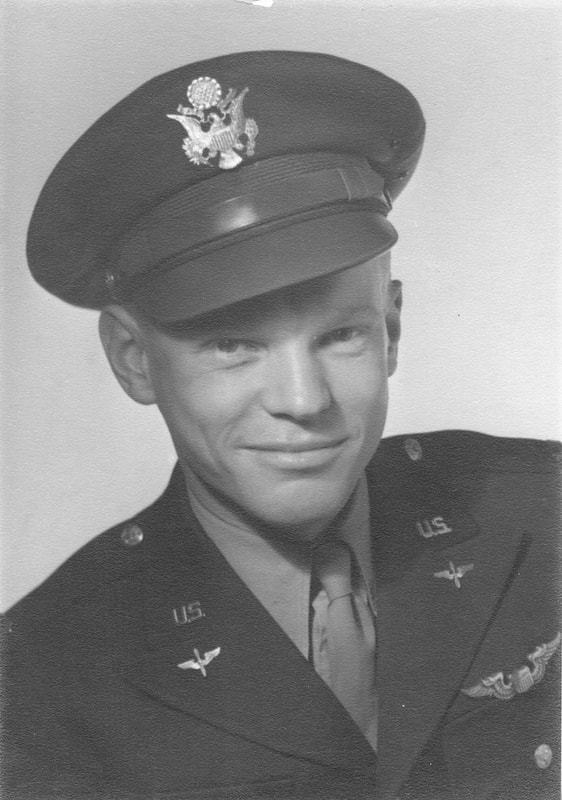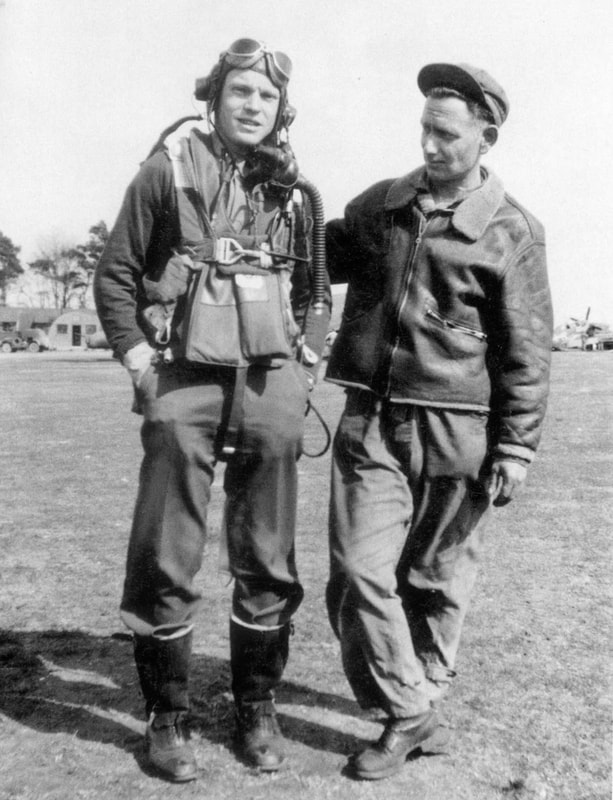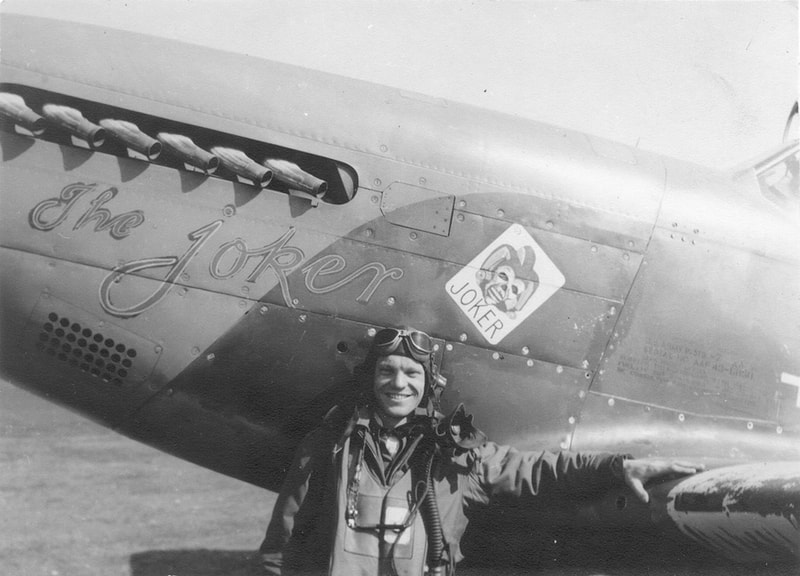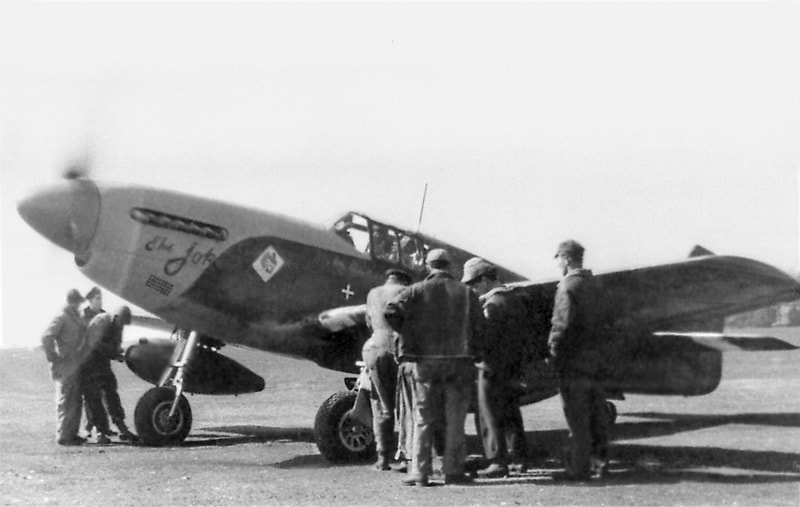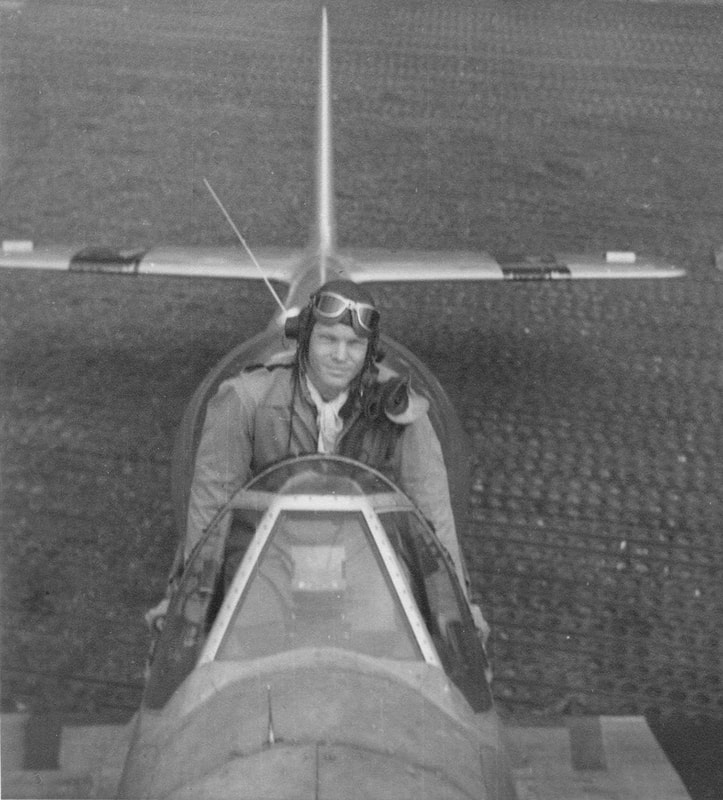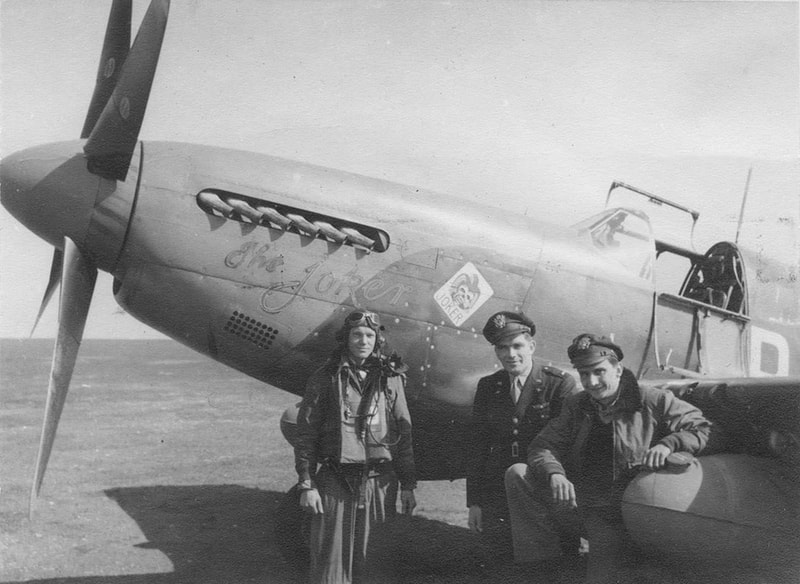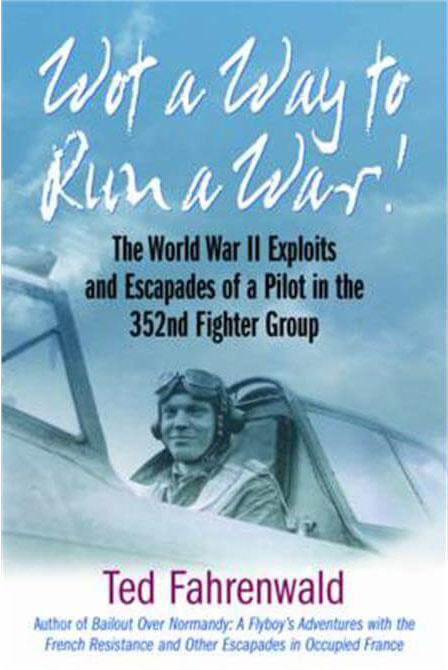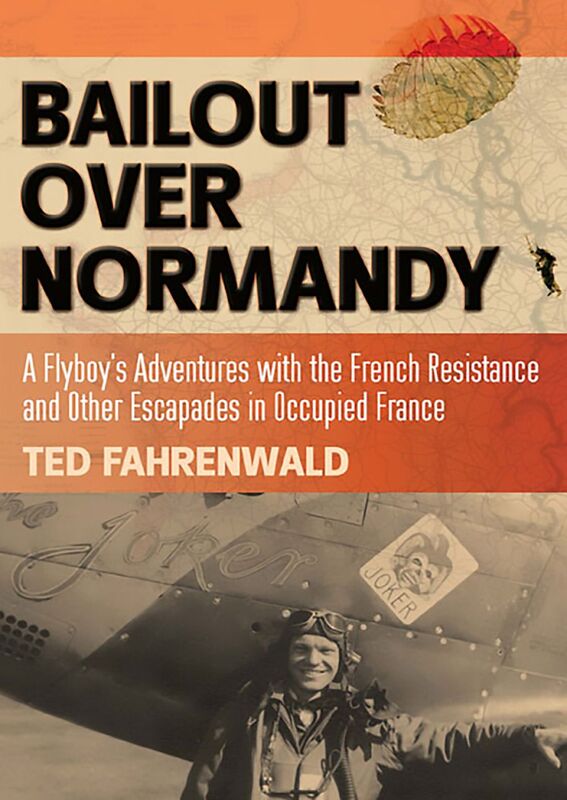Lt. Ted Fahrenwald - 352nd Fighter Group Storyteller
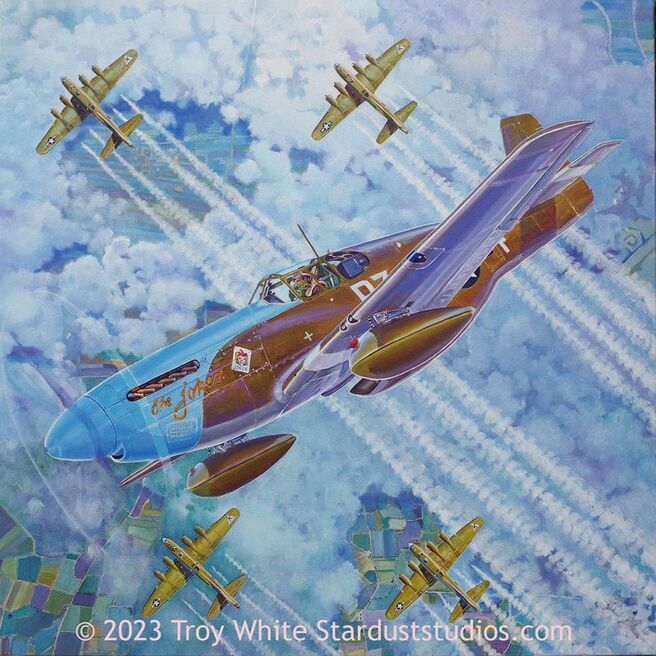
Lt. Ted Fahrenwald banks steeply over a formation of B-17s from the 379th Bomb Group during the spring of 1944.
"The Joker"
Oil on Canvas 30" x 30" © Troy White 2023 Work in Progress
Two of my favourite books about WWII aviation were both penned by Ted Fahrenwald, "Wot a Way to Run a War!" and "Bailout over Normandy". Ted's wonderfully amusing turn of phrase make his books a joy to read. I found myself turning the pages wishing his stories would never end. Neither book saw the light of day until after Ted's death in 2004 when his daughter Madeleine, a freelance editor discovered the manuscripts.
1st Lt. Theodore P. Fahrenwald was born on 26 December 1919 in Rapid City, South Dakota. His family moved to Chicago, Illinois where he attended Morgan Park Military Academy and graduated in 1937. From there he enrolled at Carleton College in Northfield, Minnesota and after completing two years of study, enlisted in the U.S. Army Air Corps. Ted was accepted for pilot training and was sent to Minter Field near Bakersfield, California for basic flying instruction and then to Luke Field Arizona where he completed his advanced training as a fighter pilot in October 1942. He then crossed the USA to join the 21st Pursuit Squadron which was part of the 352nd Fighter Group. Ted and his mates were destined to be deployed to England flying the new Republic P-47 Thunderbolt.
During the winter of 1942-1943 the P-47 was so new that it had yet to see combat in any theatre of operations and still had plenty of bugs to be ironed out. The pilots spent that cold winter at Trumbell Field in Connecticut flying in miserable conditions which was excellent preparation for the weather conditions they would encounter once in England. In March the 21st moved to Farmingdale, Long Island, home to Republic Aviation's production facility where the P-47s were built. While there the pilots got became well and truly familiar with their Thunderbolts during training flights that sometimes included using the Empire State Building as a pylon to fly rings around at about the 80th story level and buzzing Central Park, pulling up sharply to avoid the skyscrapers at one end.
In May the 21st was redesignated the 486th Fighter Squadron and at the end of June the pilots boarded the Queen Mary for a voyage to England where their operational training as part of the Eighth Air Force continued from their home base at Bodney until they began flying combat missions on 9 September 1943. From then until 8 June 1944 Lt. Fahrenwald flew 100 combat missions before being forced to bail out over enemy territory. It was during that period of time that the pilots of the Eighth Air Force Fighter Command achieved air superiority over northern Europe, a prerequisite for the successful invasion of Nazi occupied France.
The Joker painting
For over a decade I had plans for a painting of Ted Fahrenwald in "The Joker" though I was not sure what kind of composition I would end up with. Ted's storytelling provided me with so many vivid images that I was spoiled for choice and in sense gave me sensory overload similar to what I felt when I made my first parachute jump. I could rewind the images and write a description but to single out a single fraction of a second from that reel was difficult. After much internal debate, I settled upon a strong composition in which the major elements for a big X on a square canvas.
Oil on Canvas 30" x 30" © Troy White 2023 Work in Progress
Two of my favourite books about WWII aviation were both penned by Ted Fahrenwald, "Wot a Way to Run a War!" and "Bailout over Normandy". Ted's wonderfully amusing turn of phrase make his books a joy to read. I found myself turning the pages wishing his stories would never end. Neither book saw the light of day until after Ted's death in 2004 when his daughter Madeleine, a freelance editor discovered the manuscripts.
1st Lt. Theodore P. Fahrenwald was born on 26 December 1919 in Rapid City, South Dakota. His family moved to Chicago, Illinois where he attended Morgan Park Military Academy and graduated in 1937. From there he enrolled at Carleton College in Northfield, Minnesota and after completing two years of study, enlisted in the U.S. Army Air Corps. Ted was accepted for pilot training and was sent to Minter Field near Bakersfield, California for basic flying instruction and then to Luke Field Arizona where he completed his advanced training as a fighter pilot in October 1942. He then crossed the USA to join the 21st Pursuit Squadron which was part of the 352nd Fighter Group. Ted and his mates were destined to be deployed to England flying the new Republic P-47 Thunderbolt.
During the winter of 1942-1943 the P-47 was so new that it had yet to see combat in any theatre of operations and still had plenty of bugs to be ironed out. The pilots spent that cold winter at Trumbell Field in Connecticut flying in miserable conditions which was excellent preparation for the weather conditions they would encounter once in England. In March the 21st moved to Farmingdale, Long Island, home to Republic Aviation's production facility where the P-47s were built. While there the pilots got became well and truly familiar with their Thunderbolts during training flights that sometimes included using the Empire State Building as a pylon to fly rings around at about the 80th story level and buzzing Central Park, pulling up sharply to avoid the skyscrapers at one end.
In May the 21st was redesignated the 486th Fighter Squadron and at the end of June the pilots boarded the Queen Mary for a voyage to England where their operational training as part of the Eighth Air Force continued from their home base at Bodney until they began flying combat missions on 9 September 1943. From then until 8 June 1944 Lt. Fahrenwald flew 100 combat missions before being forced to bail out over enemy territory. It was during that period of time that the pilots of the Eighth Air Force Fighter Command achieved air superiority over northern Europe, a prerequisite for the successful invasion of Nazi occupied France.
The Joker painting
For over a decade I had plans for a painting of Ted Fahrenwald in "The Joker" though I was not sure what kind of composition I would end up with. Ted's storytelling provided me with so many vivid images that I was spoiled for choice and in sense gave me sensory overload similar to what I felt when I made my first parachute jump. I could rewind the images and write a description but to single out a single fraction of a second from that reel was difficult. After much internal debate, I settled upon a strong composition in which the major elements for a big X on a square canvas.
Ted flew two Mustangs that he nicknamed "The Joker", the first one serial number 43-6850 was lost with another pilot during a training flight on 8 May 1944 and his second "Joker", serial number, 42-103336 was a silver Mustang, fitted with a Malcolm hood for better visibility. Ted was flying 42-103336 on his 100th mission on 8 June 1944 when he and his mates attacked a German truck convoy heading for the Normandy beachhead. Unfortunately Ted's target was loaded with ammunition and it exploded just as he was passing just a few feet above it, crippling his Mustang and forcing Ted to take to his parachute and begin his adventure in France.
No photos exist of Ted's second "Joker" which show the artwork on its nose so in my painting we see a portrait of the first "Joker" in a carving right turn over a formation of B-17s in late April or early May 1944.
If you want to know more about the escapades of Ted Fahrenwald and his mates during WWII I highly recommend reading his books.
No photos exist of Ted's second "Joker" which show the artwork on its nose so in my painting we see a portrait of the first "Joker" in a carving right turn over a formation of B-17s in late April or early May 1944.
If you want to know more about the escapades of Ted Fahrenwald and his mates during WWII I highly recommend reading his books.
